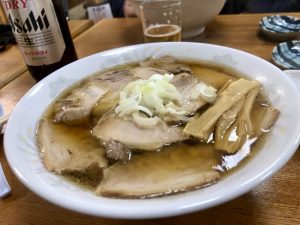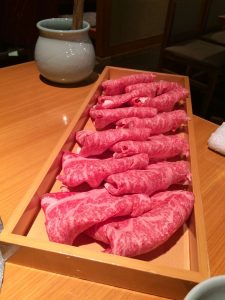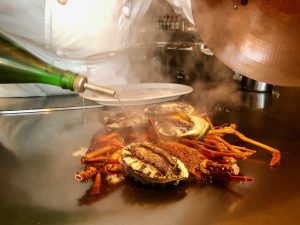Monja-yaki
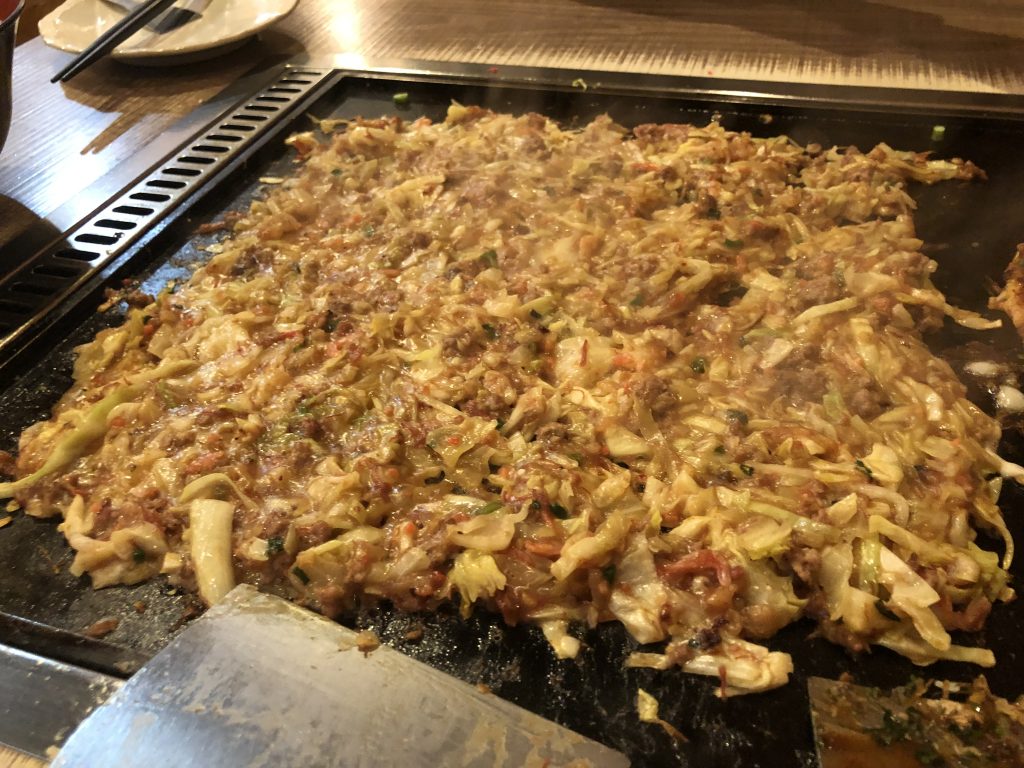
Monja-yaki is a batter based mixture of cabbage and other fillings (pork, beef, squid, curry, cheese, octopus, etc). that is thinly spread out on a hot plate and cooked until it has the consistency of cheese. You then scrap it off the hot plate using small spatulas and eat directly. It sounds horrid and doesn’t look great, but when cooked correctly, tastes awesome and is a welcome addition to a full course including okonomi-yaki and fried soba noodles.
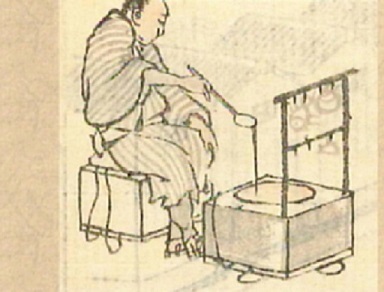 The origins of monja-yaki are somewhat shrouded in mystery, although it is said that it originated in the early 1800s as a simple dish made of leftovers that was spread thinly on the hot plate so children could draw characters in the goo. The word for character in Japanese in ‘Moji’, which eventually morphed into ‘Monja’ over time. An owner of a restaurant in the famous Monja Street in Tsukishima once told When Japan that the name came from its “leftovers” nature, which in Japanese would be “こんなもんじゃ” or in English letters, “konna monja”, which means “it is what it is”. You take it as you find it, which seems an appropriate saying for something you literally scrape together on a hot plate.
The origins of monja-yaki are somewhat shrouded in mystery, although it is said that it originated in the early 1800s as a simple dish made of leftovers that was spread thinly on the hot plate so children could draw characters in the goo. The word for character in Japanese in ‘Moji’, which eventually morphed into ‘Monja’ over time. An owner of a restaurant in the famous Monja Street in Tsukishima once told When Japan that the name came from its “leftovers” nature, which in Japanese would be “こんなもんじゃ” or in English letters, “konna monja”, which means “it is what it is”. You take it as you find it, which seems an appropriate saying for something you literally scrape together on a hot plate.
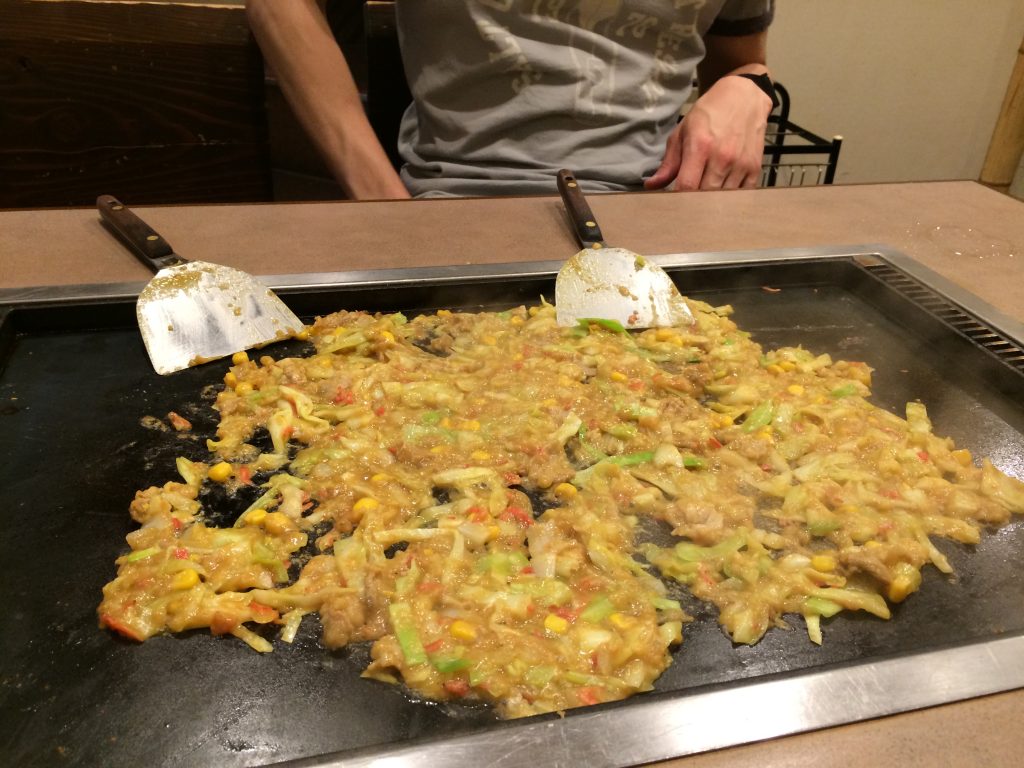
Making monja-yaki yourself
While the ingredients are similar to okonomi-yaki but there is more water added which makes the mixture runnier and easier to spread out thinly on the hot plate. It is actually pretty tricky to make and many less experienced locals mess up the procedure. Check out the video below for a master lesson. If you can do it this well first time, expect to be praised for your efforts.
A key point is to make sure the final layer of mixture is well cooked on the bottom, otherwise the taste will be quite watery and underwhelming. There needs to be a good foundation of brown, caramelized mixture otherwise you may be disappointed.
Also bear in mind that it takes longer than you might think to boil off the water once prepared, so make the monja-yaki off to one side and leave room for an okonomi-yaki to cook at the same time.
